With Washington gridlocked, friends and foes of illegal immigrants find their own ways of Dealing with the Deluge
By ERIC GRIFFEY
Every weekday morning at 9 a.m., the lobby of the Catholic Charities’ office, in a building attached to La Gran Plaza mall, starts to fill up with a cacophony of whispered languages and foreign accents. Flimsy plastic chairs line the wall and clutter the middle of the narrow room, so that everyone has to shift to let another person pass by – like getting up during a movie.
Antonio Montañez and his wife (she asked not to be named) are waiting to see someone who can help put him on the path to citizenship. 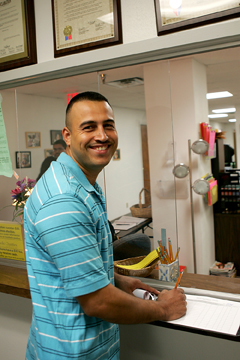 Montanez, a clean-cut man in his mid-to-late 20s, who speaks a little English, has been in the U.S. since 1998 on a legal resident visa. He assembles steel structures, such as sheds, for a living. His children were born in the U.S., and he has a strong network of family and friends here. He, like many others in the waiting room, sends as much money back to Mexico as he can afford, sometimes $200 or $300 a month, sometimes nothing.
Montanez, a clean-cut man in his mid-to-late 20s, who speaks a little English, has been in the U.S. since 1998 on a legal resident visa. He assembles steel structures, such as sheds, for a living. His children were born in the U.S., and he has a strong network of family and friends here. He, like many others in the waiting room, sends as much money back to Mexico as he can afford, sometimes $200 or $300 a month, sometimes nothing.
Sitting a few chairs away, Sandra Quiroc, a soft-spoken, well-dressed woman in her late 20s, is raising three children on her own. The native of Zacatecas, in Mexico, can’t find consistent work, though she does make some money from occasionally cleaning houses. She and her husband entered the country illegally in 2003. She is waiting for help with a “U visa,” given to immigrant victims of crimes – in her case, domestic violence.
She wants to stay in the U.S. for the benefit of her three children, the youngest of whom was born here, but, she said, “It’s difficult to find a job.”
Quiroc has been out of a steady job for nine months. And while Montañez is a little better off, both rely on the help of organizations like Catholic Charities.
As the number of undocumented immigrants in this country continues to grow, so does the volume of the debate over how to fix the problem. Border walls, vigilante groups, major bills in Congress that have gone nowhere – they’re all part of a controversy that has no clear end in view or even likely to come into view for a long time. Federal enforcement efforts, in the form of raids by the Immigration and Customs Enforcement agency, known as ICE, have increased in North Texas in the last year, targeted at those with criminal records or violent gang affiliations, but also sweeping up hundreds of people with no legal problems other than their immigration status. Local governments, which bear much of the cost of the growing undocumented population, have also gotten into the act, passing or proposing ordinances and policies aimed at making it tough for such immigrants to stay for long in their towns.
“In the last couple of years there has been more activity with raids and deportation in areas that ICE has never been involved with [in the past],” said State Rep. Robert Alonzo of Dallas. “There was even a case where someone was arrested at a hospital. It’s become crueler.”
But still, every day a stream of humanity crosses into this country from Mexico, most of them willing to endure the violence, cost, hardships, and dangers of that trip to try to make a better life for themselves and their families, and they have a major impact on the U.S. economy and on the communities where they settle. And so another part of the immigration equation is also growing – the list of organizations and even industries that help deal with the realities of that population.
Some, like Catholic Charities, provide social services and referrals. A growing cadre of immigration-law specialists help with legal problems. And Hispanic organizations and elected officials fight to improve laws and conditions for illegal as well as legal immigrants, even though they don’t all agree on what should be done.
The Rev. Mark Gonzales, president of a Dallas-based Hispanic advocacy group, also chairs a council of evangelical leaders that advises U.S. Sen. John McCain on issues important to the Hispanic community. He recognizes the difficulty of balancing U.S. law with biblical teachings and understands the conundrum of openly providing help to a population that many believe to be the equivalent of criminals, people who simply should not be here.
“Regardless of their status, we’re going to help the needy. We’re mandated by DELETEure,” he said. “Sometimes it’s a double-edged sword: We’re a nation of laws, but we also have to help the helpless and speak up for those who cannot speak for themselves. That is the line we are trying to walk right now.”
There is no shortage of support systems for immigrants coming into this country. Nonprofit agencies like Catholic Charities and LULAC, the League of United Latin American Citizens, have become something like one-stop immigration organizations. Catholic Charities, for example, helps immigrants get medical care, money for utilities or rent, legal counseling, child welfare services, and so on. They do not, however, help undocumented immigrants find work.
Organizations such as LULAC lobby lawmakers and refer people to immigrant-friendly lawyers, doctors, and other advisors. Other groups around the Metroplex, such as Casa Guanajuato and the Human Rights Institute, counsel immigrants free of charge. Many others, like the Immigrant and Refugee Services of Fort Worth, charge a fee.
Scores of individuals are also doing their part to help. Alonzo, the Democratic legislator and criminal lawyer, helps immigrants who have been detained by referring them to immigration lawyers, and in some cases using his position to advocate for their release, when he feels their rights have been violated. He also works for immigrant rights in the Texas Legislature and with his congressional counterparts. 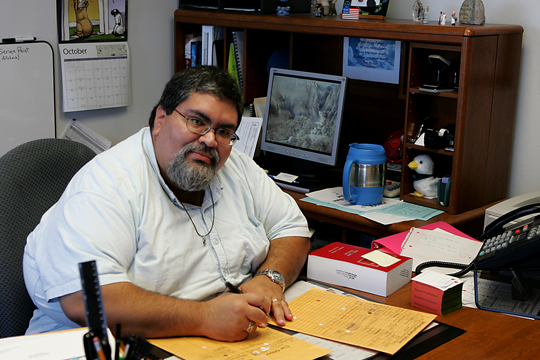 According to Xergio Chacin, head of the Immigration Consultation Services program, one in 15 people in Fort Worth have been advised by his wing of Catholic Charities. With a staff of six, the department provides legal advice to about 3,400 people each year. Federal law gives such nonprofits the right to serve as legal counsel for immigrants who have no other representation.
According to Xergio Chacin, head of the Immigration Consultation Services program, one in 15 people in Fort Worth have been advised by his wing of Catholic Charities. With a staff of six, the department provides legal advice to about 3,400 people each year. Federal law gives such nonprofits the right to serve as legal counsel for immigrants who have no other representation.
“We don’t take necessarily every case,” said Chacin. “We can refer people to someone who can help them. Other than that, we help people with family immigration, if someone wants to bring their family over, or if someone marries a citizen.”
LULAC, the biggest and oldest Hispanic organization in the U.S., is a different animal, with more than 700 local councils around the country. Based in Washington, D.C., the group helps individual immigrants get healthcare and social services and acts as an advocate for immigrants, by educating the community and lobbying lawmakers at every level of government. They also keep a “scorecard” on how politicians vote on the issues they deem important. 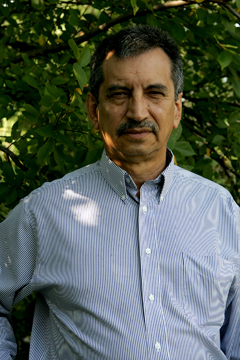 The Fort Worth chapter, headed by Hector Carrillo, recently sponsored an immigration forum, where speakers touched on many aspects of the issue, including the rights of immigrants who come in contact with the police but aren’t suspected of crimes, and the need for a systematic way to help children whose parents have been taken into custody by ICE. Carrillo said that Fort Worth is relatively immigrant-friendly, considering what has happened in other North Texas cities in recent years.
The Fort Worth chapter, headed by Hector Carrillo, recently sponsored an immigration forum, where speakers touched on many aspects of the issue, including the rights of immigrants who come in contact with the police but aren’t suspected of crimes, and the need for a systematic way to help children whose parents have been taken into custody by ICE. Carrillo said that Fort Worth is relatively immigrant-friendly, considering what has happened in other North Texas cities in recent years.
“There’s a limit to the assistance we can provide,” he said “Basically, we have a system that prepares [immigrants] with documents and legal advice. We do not get involved in criminal cases, only in suspension of deportation and things like that.”
Lico Reyes, civil rights chair of the Fort Worth LULAC council, put together a packet he calls the “Civil Rights Survival Kit.” The packet includes contact information for relevant government agencies, civil rights and immigrant organizations, immigration lawyers, and consultants on civil rights and labor issues, as well as various forms and tip sheets.
Some groups outside of Texas have even gone so far as to warn illegal immigrants about potential raids. According to an article in the Los Angeles Times, people from all walks of life are tipping off immigrant advocacy groups, for instance, when they see groups of federal agents checking into a hotel or a surge of activity at the local courthouse. Those interviewed for that story said that they are not trying to prevent the raids or encouraging the immigrants to flee but just trying to soften the blow when arrests and raids do happen.
Carl Rusnok, director of communications for the ICE’s central region, said he has heard of groups warning immigrants but hasn’t encountered it locally.
“I have not heard that ICE has been affected by such groups so far,” he said via e-mail. “ICE believes the efforts of these groups would better serve the public if they instead encouraged individuals to comply with the law rather than impede our efforts to enforce it.”
The biggest fights over how to enforce immigration laws and how to change them have gone on at the federal level, where Hispanic political power and immigrant economic power come into play. At the local level, however, the equation changes.
The difference between how immigration is viewed by federal and state officials versus the local level comes down to one thing, said Gonzales: money.
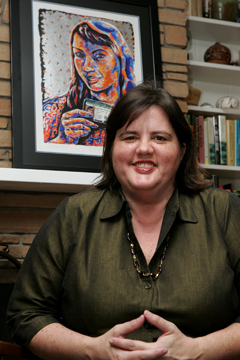
“On the federal level, they love [immigrants] because they’re a great boost to the economy,” Gonzales said. “They bring a trillion dollars a year into the economy. They’re putting money into the Social Security system … to the tune of $70 million a year” – money that eventually goes to other Americans, since undocumented workers usually can’t claim those benefits.
At the state level, he said, “they put close to $17 billion a year into the economy. After you take away everything we use – healthcare and the social services they tax the economy with – there is a surplus of over $400 million, because [undocumented immigrants] also pay sales tax and other taxes. So at the state level, [they’re] a positive net flow into the economy.”
Gonzales got his numbers from a report written last year by Texas Comptroller Susan Combs, in which she subtracted the cost of hospital care, social services, and schools from the projected dollars of undocumented immigrants put into Social Security and what they paid in sales and other taxes from 2005. The net result, the report concluded, was an injection of about $424.7 million that year into the Texas economy.
Many proponents of stricter immigration laws believe that immigrants are a huge drain on American society, taking jobs away from citizens and signing up for expensive social services. Alonzo believes that some city governments, especially in the suburbs, don’t recognize immigrants’ bottom-line contributions.
He believes that some smaller cities are trying to pass unconstitutional laws and involve their cities and police departments in immigration issues where they don’t belong. “If you notice, the big cities don’t do that because they understand the big picture,” he said.
Regardless of what immigrants contribute to the economy, city and county officials often don’t see that as translating to tax dollars. “At the local level, that money is not trickling down to local municipalities. And the problem is those are the service they are actually using,” Gonzales said. “They’re using the hospitals and schools, so at the city level, they think they’re [immigrants] a detriment to society.”
In Tarrant County, the John Peter Smith hospital system will not provide most charity healthcare, except on an emergency basis, to undocumented immigrants. Just two percent of JPS’ then-$329 million surplus would cover the cost of that care, the Allied Communities of Tarrant County reported in 2006, although JPS puts the cost-of-care figure much higher. The public hospital system stopped providing charity care to immigrants in 2004, claiming that it was operating at a loss. The numbers, however, show otherwise: A 2007 ACT report says that, thanks to contributions from various pools of money, JPS made a $17 million profit from charity care in 2006, “while turning sick people away.”
“Immigrants have always been a net provider, rather than a net user, of social services,” said Susan Gonzales Baker, director of the Center for Mexican-American Studies at the University of Texas at Arlington. “But the closer you get to the immigrant community, at the local level, that’s where you start to see a mismatch of policies.” Because local governments are the ones educating and caring for immigrants, she said, “it’s break-even at best for the local level.”
She pointed out that the immigration cycle isn’t tracking the business cycle as closely as it has in the past.
“In earlier eras, immigration went up when times where good, then it went down again when times where bad, like, there wasn’t a lot of immigration during the Great Depression,” she said. “But now, the immigration trend line is just going up. It has transformed from a strictly economic phenomenon to a social process.”
In Farmers Branch, city officials have been trying for almost two years to put in place an ordinance to ban landlords from renting to illegal immigrants, but the courts have knocked down those attempts thus far. The latest version of the ordinance has also been blocked by a judge, pending the outcome of another lawsuit.
The city of Irving two years ago approved a Criminal Alien Program designed to provide round-the-clock communication between the police and ICE regarding illegal immigrants with criminal records. In effect, it empowers local officers to act as de facto immigration agents. Since 2006, the program has resulted in more than 1,500 people being deported, and it has had a profound effect on the Hispanic community. According to news media reports, many Hispanic families there have taken their kids out of Irving public schools, and others are moving out of town.
In Arlington, Grand Prairie, and other places around North Texas, local police reportedly are taking it upon themselves to detain immigrants who have been pulled over for simple traffic violations, and in many cases detaining them for days, not for any criminal violation, but just awaiting pickup by ICE. In Fort Worth, ICE raids are becoming more common. And what’s happening here is nothing compared to what they’re doing in Oklahoma, where it’s now a state felony to harbor, transport, shelter, or conceal undocumented immigrants.
The result of local anti-immigrant ordinances and local police involvement has been a trend toward what experts refer to as the criminalization of immigration law. Being in this country without proper papers is not actually a criminal matter, but a civil dispute – even though people who come here illegally can be held in jails and camps, in some case for years at a time, with little contact with the outside world.
At LULAC’s immigration forum, Alonzo and others talked about educating immigrants, police, and others about what the law actually allows in such situations. Legally, local police departments may detain alleged illegal immigrants for up to 48 hours on an ICE “hold,” Alonzo said, unless there are criminal charges pending. And, he said, persons arrested are required to give police only their names and dates of birth – they don’t have to answer questions about their immigration status or where they were born.
Reyes’ “civil liberties survival packet” includes a tip sheet, provided by the American Civil Liberties Union, on what to do if someone is stopped by police, with a hotline number to call in cases of suspected racial profiling.
Alonzo told a story of an undocumented immigrant held for four days in Allen, in Collin County, two days more than was legal. When he demanded that the man be released, he said, police simply moved him to McKinney and told Alonzo it wasn’t their problem.
“Their rights are still being violated,” he said. “I know of many instances in which those cities violate that law.” 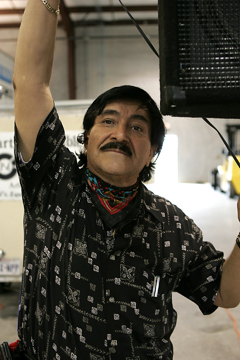 “We feel that an immigrant is not a criminal, [he or she is] an undocumented individual,” Reyes said, and police shouldn’t take it upon themselves to act as immigration officers. “If someone gets a traffic ticket, it’s just a traffic ticket [not an immigration issue.]”
“We feel that an immigrant is not a criminal, [he or she is] an undocumented individual,” Reyes said, and police shouldn’t take it upon themselves to act as immigration officers. “If someone gets a traffic ticket, it’s just a traffic ticket [not an immigration issue.]”
Local officials in many cases have stepped in to fill what they see as a vacuum created by the federal government’s failure to enforce immigration laws. A comprehensive rewriting of immigration policy by Congress could clarify all these situations – but that’s not likely to happen anytime soon.
Immigration bill after immigration bill has failed in Congress; last year a plan endorsed by President George W. Bush passed the U.S. House but died in the Senate. In the Texas Legislature, almost 70 bills concerning aliens were proposed in 2007, though very few were signed into law. Curiously, the immigration debate – a normally inexhaustible source of political fodder – mysteriously vanished from the current presidential campaign, despite the fact that John McCain co-sponsored a major reform bill considered a few years ago. (Some expected it to resurface in Tuesday night’s debate, after the Weekly went to press.)
In 2005, two competing immigration plans were introduced in Washington. Neither passed, but they still represent the two most broadly accepted ideas of how to address the problem. The McCain-Kennedy bill called for tightening border security, granting legal status to nearly all the estimated 12 million undocumented immigrants, and increasing penalties for employers who hire illegal workers. It would also have created a point system for future immigration applicants that would place less emphasis on family connections and more on education and skills in demand by U.S. businesses.
House Bill 4439, supported by Bush, called for bringing illegal immigrants “out of the shadows without amnesty and without animosity.” The plan would require immigrants to learn English, pay taxes, and pass a background check before they could be considered for legal status. The bill also sent a shiver down the spines of those who dedicate their lives to helping immigrants – churches in particular – because it would have made it a crime, in many cases, to knowingly help undocumented immigrants. The bill passed the House but didn’t make it through the Senate, because, observers say, politicians feared a massive electoral fallout.
“The biggest impact of that bill would have been that if you help someone who was undocumented, you could be prosecuted as well,” said Alonzo. “The best example of the problem with that was what happened to the Hispanic evangelical pastors. They were Republican; now they’re all split. They say, ‘How can we support you on abortion and then you turn around and put us in jail for doing God’s work – helping the poorest and neediest people, immigrants?’ “
Lawmakers outside Washington have already learned about the political price to be paid for immigration reforms. In the mid-’90s in California, Republicans were running the government. A bill called Proposition 187, approved by nearly 60 percent of California voters in 1994, would have removed undocumented children from public schools and denied emergency healthcare to people living in the state illegally. It was ruled unconstitutional, and the Republicans lost power, as a result of alienating California’s Hispanic population, according to Alonzo. Democrats have held majorities in both houses of that state’s legislature since 1997.
“We all remember what happened in California after they passed the 187 law,” the Dallas legislator said. “In 1996, President Clinton added extra funding and more staff to help over one million people become citizens. Compare that to 2008: Now our government is having raids, deportations, delaying citizenship.”
He believes that the immigration issue might still have a powerful effect in November for several reasons: the current ICE raids, the perception that the government is becoming increasingly unfriendly toward immigrants in general, and the increasing power of the Hispanic electorate.
McCain’s poll numbers dipped during the Republican primaries, and opponents of his bill said that was due in part to the fact that the bill would have given amnesty to illegal immigrants. McCain soon toughened his rhetoric on immigration, and after winning the nomination, wouldn’t say whether he would still vote for the bill he once championed. U. S. Sen. Barack Obama has promised to implement comprehensive immigration reform during his first term but has yet to outline specifically what that would entail.
There’s no equivocating about what ICE’s stance has been, however. Over the last couple of years, the agency has stepped up its efforts to round up undocumented people with criminal backgrounds and also to go after their employers. The number of undocumented immigrants deported by ICE has steadily increased. In 2006, the agency sent a record 195,000 people back across the border; in 2007, they deported more than 276,000.
In May 2007, ICE arrested 148 immigrants in the Dallas area, including seven children, in an attempt to round up illegal immigrants with criminal records. Only 41 of those arrested had a prior conviction. Two months later, federal agents conducted five days of raids in North Texas, with the ostensible goal of jailing those with criminal records. They arrested 274 people, including 99 with criminal convictions.
Later that month, ICE, with the help of more than a dozen local, state, and federal agencies, arrested another 121 people in the area as part of “Operation Community Shield,” a national program targeting violent gang members.
In March of this year, ICE, in conjunction with six other state and federal agencies, set out to find undocumented immigrants working for a particular security company. In raids at 26 Latino nightclubs, pool halls, restaurants, and other businesses in Dallas, 49 immigrants were arrested.
Those who employ undocumented workers are also feeling the heat. According to the ICE web site, last year the agency collected more than $30 million in criminal fines, restitutions, and civil judgments in worksite enforcement cases.
In 2005, ICE made only 176 criminal arriests tied to workforce investigations, but that total rose sharply in each following year, to more than 1,000 in the first eight months of 2008. The statistic includes dozens of business owners and supervisors facing charges that include money laundering and harboring or knowingly hiring illegal aliens.
Many employers who hire undocumented workers believe that the government is doing a disservice to the economy by stripping them of their workforce. Dr. Ray Perryman, president of the Perryman Group, an economic and financial analyst firm, studied the impact of undocumented workers on the Texas economy. He concluded that if the entire undocumented population of Texas were removed, the economy would take a $53.6 million hit, and 833,345 jobs would be vacated.
Maybe the most heartbreaking aspect of the immigration problem is the effect it has on the children of those who are detained. In some cases, parents who are deported are forced to leave their children behind. Rusnok said that ICE agents do everything they can to identify dependents, but many detainees won’t tell ICE about their children, believing that they are protecting them.
In many cases, the abandoned children stay with relatives, neighbors, or close friends. In Garland, the school district used to require only one emergency contact person to be listed for each student but now requires six people’s names, all of whom are allowed to withdraw a student from school. The Fort Worth school district has no such plan.
Many ICE detainees with children are sent to the Don Hutto Family Residential Facility, a converted medium-security prison in Taylor. Opened in 1996, the Central Texas lockup was designed to end the “catch and release” of aliens along the southern border of Texas – that is, the federal government’s practice of releasing detainees on immigration bonds – and to provide a place where families of detained immigrants could be together. According to numerous media accounts, however, it’s something closer to a scene from a Dickens novel.
Horror stories poured out of the facility, about children receiving inadequate medical care, education, and exercise. Guards kept children in line by threatening to separate them from their families. Any violations of the mandated schedule – on daytime naps, for example – could be grounds for disciplinary action.
The ACLU stepped in, and the razor wire that once surrounded the facility was removed. Children are no longer required to wear prison uniforms and are allowed much more time outdoors. Educational programming has expanded, and guards have been instructed not to discipline children by threatening to separate them from their parents.
Alonzo believes that facilities such as Don Hutto are unnecessary, and tear families apart. “In my opinion, we should not be detaining the parents of undocumented immigrants,” he said. “They’re not going anywhere. They’ve got to stay with their children; they’ve got to take them to school. They can’t hide. The best thing to do is to keep families together.”
Gonzalez Baker said that family and community connections are helping immigrants get by here in the States, and in some cases, are what brings them here in the first place.
“Because they have such a strong network of people from their community and from their family who are here and have jobs, they are able to find jobs, even during bad economic times,” she said. “They just plug them right into the network.”
An estimated 500,000 people cross illegally into this country from Mexico every year, according to Migrant Information Source, a nonprofit think-tank based in Washington D.C. Just three years ago, the think-tank experts reported a record-breaking 473 migrant deaths at the U.S.-Mexican border. That same year, border patrol also agents rescued 2,570 people around the border who might have otherwise have died.
And then there are the folks like Montañez and Quiroc, who are just trying to get by and raise their families in foreign country. They don’t follow politics, they said, but both are aware that they are at the center of one of the United States’ hottest, longest-running debates.
“[Discrimination] is everywhere,” said Montañez, through an interpreter. “It’s at work, on the streets, and in the schools.” And yet, he said somewhat sternly, “This country is made of immigrants.”











